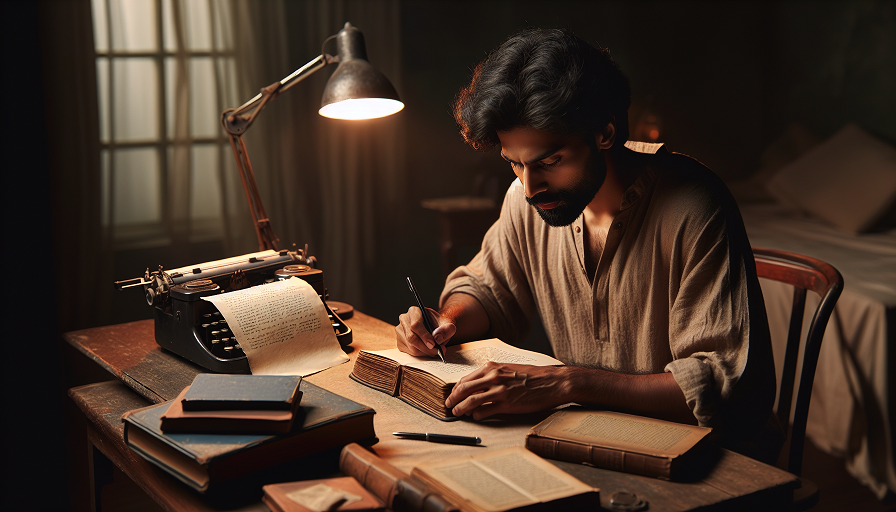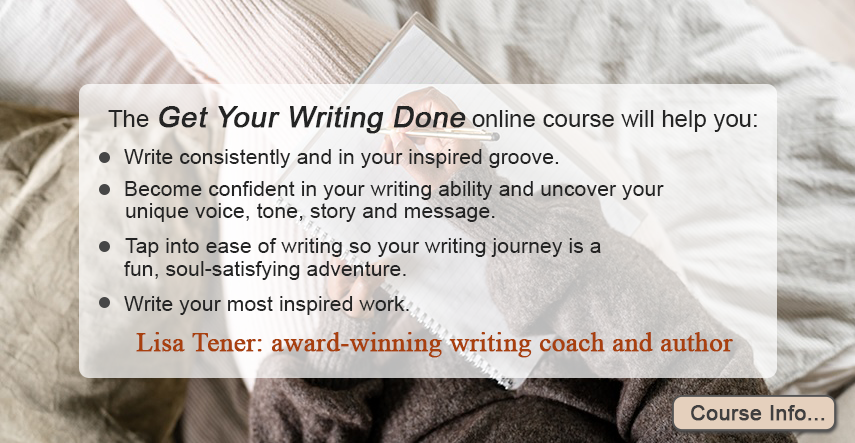
Every writer has a voice in their head, and it isn’t always kind. Sometimes, it’s a whisper: “That sentence isn’t good enough.” Sometimes it’s a shout: “You’re wasting your time.” This voice has many names—self-doubt, impostor syndrome, perfectionism—but most often, we call it the inner critic. And while it may mean well (trying to protect us from failure or embarrassment), it’s notorious for stepping in at the wrong moment: when we’re drafting.
The drafting phase is supposed to be messy, raw, and gloriously imperfect. But for many writers, it becomes a battleground of hesitation and second-guessing. Words are judged before they hit the page. Sentences are edited mid-creation. Paragraphs are deleted before they ever get the chance to live.
The good news? That inner critic isn’t the enemy—it’s just in the wrong role. It’s like inviting your tax auditor to help decorate your wedding cake. What you need in early drafts isn’t critique—it’s permission. Here we look at how to retrain your inner voice, set it aside when needed, and draft with the freedom your story deserves.
Contents
- Understanding the Inner Critic’s Role (and Misplacement)
- Signs Your Inner Critic Is Interfering With Drafting
- Techniques to Quiet the Critic and Unleash the Draft
- Mindset Shifts to Support Creative Flow
- Using Community to Bypass Isolation
- When the Critic Is Trying to Tell You Something
- Creating Rituals That Signal “Critic Off”
- Let the Story Speak Before You Judge Its Voice
Understanding the Inner Critic’s Role (and Misplacement)
The inner critic isn’t evil. It’s your quality control system. It ensures your work eventually makes sense, has structure, and avoids clichés. But it belongs in the revision phase—not the drafting chair.
The Brain on Draft Mode vs. Edit Mode
Creativity and critique live in different corners of the brain. When you’re drafting, you need flow—associative thinking, emotional truth, freedom from rules. Editing requires analysis, logic, and judgment. When both compete for airtime, you get friction. Flow halts. Doubt creeps in. Productivity dies.
Recognizing this mental tug-of-war helps separate the two processes. You don’t have to kill your inner critic—just reschedule their shift.
The Cost of Premature Editing
Trying to perfect a scene before it exists is like trying to frost a cake that’s still batter. You waste time, stunt momentum, and risk never finishing. A messy draft is not a failure—it’s a necessary part of writing. Let it breathe. Let it be bad. You can’t fix what isn’t written.
Signs Your Inner Critic Is Interfering With Drafting
Writers often mistake the inner critic’s interference for “writer’s block.” But there are telltale signs that judgment—not lack of ideas—is the real saboteur.
- Rereading and rewriting the same paragraph instead of moving forward
- Constantly doubting whether an idea is “good enough” to pursue
- Deleting large chunks of work mid-draft
- Feeling paralyzed at the blank page despite knowing the plot
- Hearing a voice that questions your talent, relevance, or worth
Sound familiar? If so, you’re not blocked. You’re being critiqued in the wrong phase. It’s time to shift that energy.
Techniques to Quiet the Critic and Unleash the Draft
Let’s move from diagnosis to strategy. Here are actionable ways to unwrite the critic, loosen your grip, and get words flowing again.
1. Permission-Based Drafting
Before you write a single word, give yourself explicit permission to write poorly. Not just okay—but gloriously, magnificently bad. Tell yourself this is Draft Zero, not a manuscript. It’s the muddy foundation, not the house.
Write a sticky note or mantra:
“This is supposed to be bad.”
Put it near your screen. Say it out loud if you have to. You’re not writing a book—you’re writing the clay from which a book will be sculpted.
2. Timed Sprints and Constraints
Nothing silences the critic like a deadline. Use timed writing sprints to bypass the inner editor. Set a timer for 10–25 minutes and write without stopping until it buzzes. No backspacing. No rereading. No editing. Just motion.
Pair this with constraints if needed:
- Write longhand to avoid digital editing temptations
- Change the font to Comic Sans to make your draft feel less “serious”
- Use a distraction-free tool like FocusWriter or the Pomodoro Technique
Constraints lower the stakes. When it doesn’t feel like “real writing,” you write more freely.
3. Write “Placeholders,” Not Perfection
When you’re unsure about a description, name, or line of dialogue, don’t stop—drop a placeholder. Use brackets like:
- [describe room here]
- [better line of dialogue]
- [insert character name]
This lets you maintain momentum while signaling where refinement is needed later. Drafting is about scaffolding. Don’t pause to paint when you’re still laying bricks.
4. Create a “Trash Draft” Mentality
Some writers call their early work the “junk draft,” “ugly draft,” or even the “garbage draft.” Why? Because it resets expectations. It frees them from perfection and invites imperfection.
Writing a “trash draft” is an act of rebellion against the myth that first drafts should resemble finished products. Embrace the mess. That’s where voice lives.
5. Externalize the Critic
Give your inner critic a name and persona. Picture them as a nagging schoolteacher, a snarky ex, or a bureaucrat with a red pen. This separates you from the voice and lets you argue back.
Then write this critic a letter. Tell them:
“You can come back during revisions. Right now, I don’t need your opinion. I need my voice. Thanks for your concern. Please wait in the hall.”
It sounds silly, but externalizing gives you power. It reframes the critic not as your truth, but as one of many voices you can choose to ignore.
Mindset Shifts to Support Creative Flow
Beyond tactics, mindset matters. Cultivating the right attitude toward drafting can build long-term resilience against self-sabotage.
Progress Over Perfection
Aim for completion, not brilliance. A rough paragraph is infinitely more valuable than a perfect idea that never gets written. Words can be shaped. Blank pages cannot.
Process Over Product
Fall in love with the act of writing—not just the end result. Celebrate time spent in the chair, not just word count. When drafting becomes a practice rather than a performance, pressure lessens. Flow returns.
Curiosity Over Judgment
Approach your draft like a scientist or explorer. Be curious about what might happen next. Let the story surprise you. If something feels awkward, ask why. Judging kills momentum. Curiosity fuels it.
Using Community to Bypass Isolation
Writers often assume that creative battles are fought alone. But community—when chosen wisely—can act as a buffer against the critic’s voice.
Find Your Draft-Safe People
Surround yourself with other writers who value process. Join critique groups that honor first drafts as experiments, not performances. Avoid early feedback from perfectionists or literal-minded readers. Not all readers are right for the early stage.
Use Accountability, Not Approval
Find a writing buddy or group who will check in with you. But make the goal progress, not praise. A friend asking “Did you write today?” is far more helpful than one asking “Can I read it yet?”
Approval-seeking feeds the critic. Accountability short-circuits it.
When the Critic Is Trying to Tell You Something
While the inner critic often sabotages creativity, it sometimes carries helpful signals—disguised in anxiety. It may be alerting you to a story problem, a scene that lacks stakes, or an emotional thread you’ve skipped.
Translating Criticism into Curiosity
Instead of silencing the critic completely, pause after drafting and ask: Is there something this discomfort is pointing to? Then explore that through questions, not judgments.
- Why does this part feel wrong?
- What might I be avoiding?
- How could I approach this differently later?
The key is to delay this inquiry until after drafting. Let the critic help with revision—but never with creation.
Creating Rituals That Signal “Critic Off”
Sometimes, the brain needs ritual to shift gears. Use physical cues to enter a creative state where the critic isn’t invited.
- Light a specific candle or play a certain instrumental playlist
- Write in a designated “drafting-only” notebook or document
- Set an intention at the start: “I will write freely for 20 minutes”
Over time, these cues condition your mind to enter drafting mode—without judgment.
Let the Story Speak Before You Judge Its Voice
Writing is hard. Not because words are hard to form, but because we so often silence ourselves before we start. The inner critic thrives on hesitation. It feeds on fear. But it cannot survive where there’s motion.
The first draft is a whisper. A test. A beginning. It isn’t supposed to be polished—it’s supposed to be honest. When you mute the critic and let the mess happen, something unexpected appears: your voice. Not the version that tries to be perfect. The version that tries to be true.
So when the doubt creeps in and the voice says, “This isn’t good,” say back, “It doesn’t have to be. It just has to be written.” Then write. Line by line. Messy, beautiful, alive. You’ll clean it up later. First, let it live.

